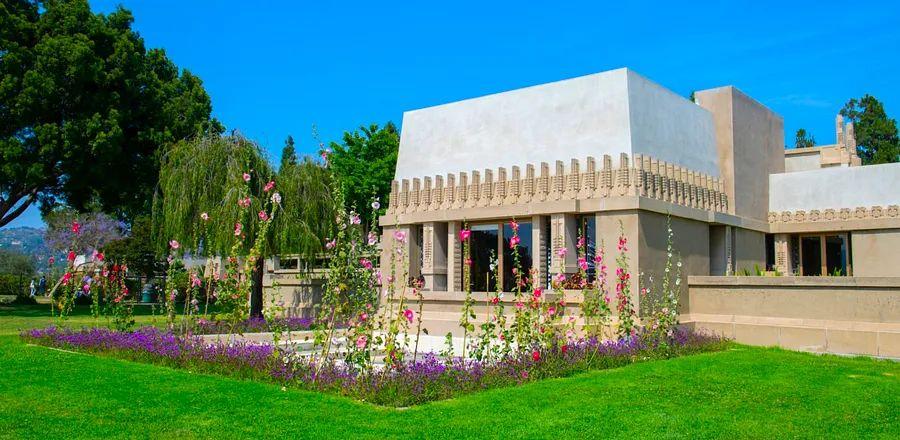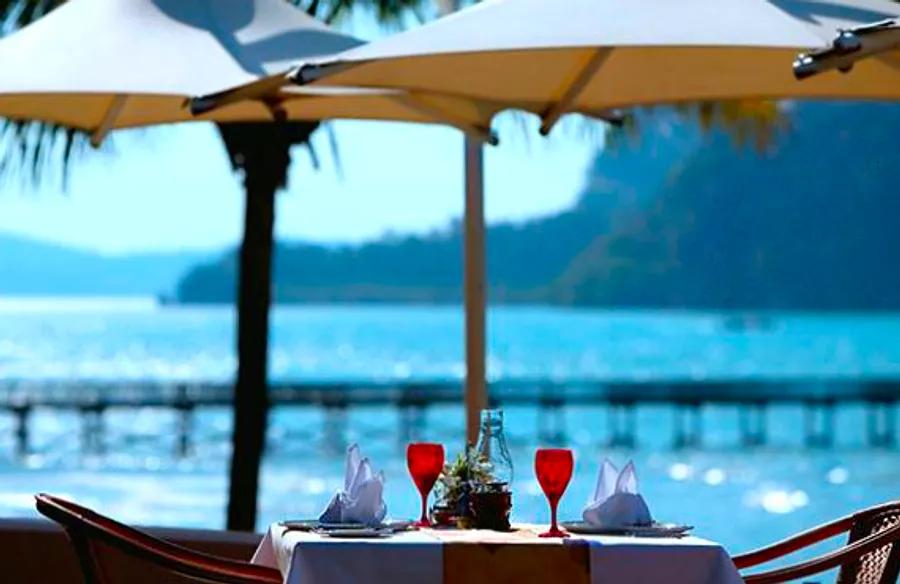5 Frank Lloyd Wright Structures to Explore on the West Coast

In 1887, renowned architect Frank Lloyd Wright embarked on his career in Chicago at the young age of 20. The city was alive with energy and growth, recovering from the aftermath of the Great Chicago Fire of 1871. During this period, Wright gained fame for his prairie-style homes, known for their low-pitched roofs, overhanging eaves, open layouts, and rows of casement windows that welcomed natural light. However, some of Wright’s most innovative works are found not in Illinois but on the West Coast.
In the early 20th century, Wright settled in Los Angeles during a particularly challenging phase of his life. Having pushed the limits of prairie-style design, he was grappling with the tragic murder of his mistress Mamah Cheney and her two children by a servant at his Wisconsin estate, Taliesin. Though they were both married when they met, Wright viewed Cheney as his true love and was devastated by her brutal death. Seeking a fresh perspective, he decided to head west.
Wright had a rebellious spirit: while many homes of his time favored interconnected rooms, he championed open floor plans. In California, he unleashed his creativity, drawing inspiration from Mayan and Aztec architecture—despite never having set foot in pre-Columbian sites. This led to the creation of some of his most iconic buildings, including the Ennis House and the renowned Hollyhock House.
Here are five Frank Lloyd Wright structures worth visiting on the West Coast:

Photo by Mike Dillon/Wikimedia Commons
1. Ennis House
Location: Los Feliz, Los Angeles, California
Access: Not publicly accessible except for private tours, but can be easily seen from the street.
Featured in Blade Runner, House on Haunted Hill, and Twin Peaks, the Ennis House has served as a backdrop for numerous iconic films and television series, appearing over 80 times on screen due to its striking, temple-like aesthetic. Constructed in 1924 for Charles Ennis and his wife, Mabel, this residence was the last of Wright's works in the Los Angeles area, showcasing the unique “textile block” style made from intricately designed concrete blocks. At the time, concrete was an innovative material, and Wright recognized its potential for artistic expression and cost-effective housing. The home comprises over 27,000 blocks, featuring four bedrooms and bathrooms, and is hailed as one of the finest examples of Mayan revival architecture in the nation.
The Ennis House is privately owned, having been sold in 2019 to cannabis entrepreneurs Robert Rosenheck and Cindy Capobianco for $18 million. It is currently closed to the public, but its stunning architecture is easily visible from the street. If you’re determined to visit, you can reach out to the homeowners through their website.

Photo by Dan Campbell/Shutterstock
2. Gordon House
Hours: Wednesday–Saturday from 12 p.m. to 3 p.m.
Location: Silverton, Oregon
Admission: Tickets start at $20, visit thegordonhouse.org for more details.
The Gordon House is among the final Usonian homes designed by Wright, completed posthumously, and is the only one he built in Oregon. Wright's Usonian-style homes emphasize simplicity and practicality, aimed at being affordable for middle-class families. Finished in 1963, the house was originally located in Wilsonville by the Willamette River and showcased Wright's hallmark horizontal design, complete with a cantilevered roof. Its construction utilized cedar wood and painted cinder blocks, along with expansive floor-to-ceiling windows to harmonize with the natural environment. In 2001, the Frank Lloyd Wright Building Conservancy intervened to save the structure from demolition, relocating it to Silverton after the original owners passed away. It became a museum in 2002 and is now accessible to the public.

Photo by Greghenderson2006/Wikimedia Commons
3. Mrs. Clinton Walker House
Location: Carmel-by-the-Sea, California
Access: Not open to the public, but can be seen from the beach.
With its enchanting cottages and stunning coastline, Carmel-by-the-Sea has become a highlight on any road trip along California’s State Route 1. This Frank Lloyd Wright-designed residence, the only one with an ocean view, provides even more reason to pause. The Clinton Walker House isn't accessible to the public, but its location on Carmel Point’s beach allows curious visitors to admire the structure from the sand (all U.S. beaches are public property). Designed in Wright’s Usonian style, the house uniquely resembles a ship's bow slicing through waves. Built in 1951 for Della Walker, the widow of Clinton Walker, she reportedly wrote to Wright expressing her desire for a home “as durable as the rocks and as transparent as the waves.”
Covering about 1,200 square feet, this Usonian-style home features a hexagonal layout. Three rooms offer breathtaking ocean views through expansive windows, and the living room showcases a striking floor-to-ceiling fireplace. It was added to the National Register of Historic Places in 1977.

Photo by BD Images/Shutterstock
4. Hollyhock House
When: Thursday–Saturday from 11 a.m. to 4 p.m.
Where: East Hollywood, Los Angeles
Visit: Tickets starting at $7, hollyhockhouse.org
In 1915, oil heiress and socialite Aline Barnsdall approached Wright to design a theater. As they collaborated to bring Barnsdall’s visions to life, the plans grew to include commercial spaces, an artist residence, a cinema, two guesthouses, and Barnsdall’s own residence—though only the guesthouses and main residence were ultimately constructed. She requested that her favorite flower, the hollyhock, be integrated into the home's design. Today, visitors can spot this flower (noted for its notched petals) throughout the home’s textiles, furnishings, decorative glass, and stonework.
Similar to the Ennis House, Hollyhock House draws inspiration from pre-Columbian Central American architecture and carries a mysterious, haunting quality. Upon its completion, Barnsdall found Hollyhock too impractical for living (not to mention the absence of the theater that inspired the project). In 1927, she donated Hollyhock House, a guest residence, and 12 acres of her 36-acre estate to Los Angeles. The city still manages the property, which finally saw the addition of a long-awaited theater in 1971. In 2019, Hollyhock House was designated the first UNESCO World Heritage site in the city.

Photo by Anna Kristiana Dave/Shutterstock
5. Hanna-Honeycomb House
When: Open twice a year
Where: Stanford, California
Visit: Free admission, hannahousetours.stanford.edu
Situated on the campus of Stanford University, the Hanna-Honeycomb House was built in 1937 for Professor Paul Hanna and his wife, Jean. Its name comes from its unique hexagonal design—remarkably, there are no right angles in its floor plan. This house marked Wright's initial exploration into hexagonal architecture and is regarded as a prime example of this distinctive style. Constructed with local materials, it features redwood boards, San Jose bricks, plate glass, and native concrete. The property also includes a hobby shop, a storage building, a carport, and a guesthouse.
After residing in the house for 38 years, the Hannas donated it to the university in 1975. The Hanna-Honeycomb House is accessible for public tours only twice a year, subject to Stanford’s Heritage Services. Email them to inquire about the next available tour dates.
Evaluation :
5/5



